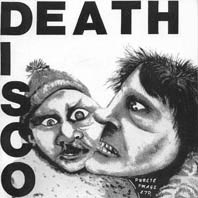The 2006 Whitney Biennial
Most writings on the 2006 Whitney Biennial focus on the canny way it reflects the “apocalyptic mood at the moment,” or on its above-board internationalism. Michael Kimmelman, in the Times, says that one of the exhibition’s unstated goals “hop[es to] recalibrate the image of the art world as something other than youth-besotted and money-obsessed.” The Village Voice’s Jerry Saltz calls Day for Night—the first named Biennial—“the liveliest, brainiest, most self-conscious Whitney Biennial I have ever seen.” He’s got the last part right, I’d venture.
Call it the ‘artless’ Biennial. It’s no fun, homely, and solipsistic. Tyler Green calls it “an awesomely bad exhibition,” citing poor installation and “curatorial gasbagging that turns wall text into wall essays.” (We part on his objections to curatorial ‘foregrounding,’ which seems to me to be a reasonable aim in pomo times—it’s just that the curators’ vector is, well, uninteresting.) Compare and contrast the just-opened Berlin Biennial, which has forsaken a focus on the new (or a metacommentary on the state of the art world) for one on place: Massimiliano Gioni—one of the curatorial triumvirate—spoke that “we came to understand in Berlin were the incredible layers of history and all the different ways that artists work and show here—not just in institutions, but in temporary spaces, apartments.” (Other exhibition sites include an office, a ballroom, the shuttered Jewish School for Girls, a former horse stable, a church, and a cemetery.) In the end, Christopher Knight best diagnoses what’s wrong with this and future editions of the Whitney Biennial: in jettisoning the show’s raison d’être without abandoning the Biennial itself, the curators doom their mission.




































